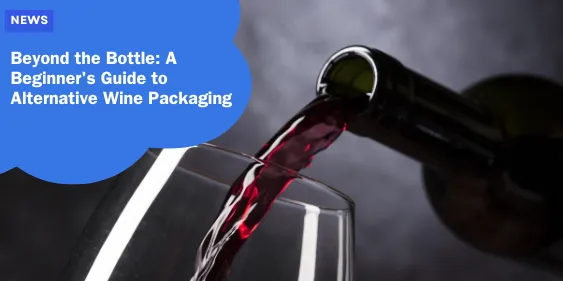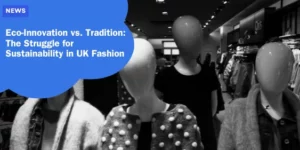Beyond the Bottle: A Beginner’s Guide to Alternative Wine Packaging

Wine packaging is undergoing a notable transformation, moving beyond the traditional glass bottle to embrace kegs, boxes, and cans.
This shift is revolutionizing the wine industry, driven by a demand for greater convenience and sustainability.
These alternative packaging options offer significant benefits, including reduced waste, cost savings, and enhanced wine freshness.
Rising Trend
The trend toward alternative wine packaging is fueled by evolving consumer preferences and a heightened focus on environmental impact.
For example, forward-thinking establishments like Uncharted and JKS are pioneering tap wine services, showcasing a range of wines from budget-friendly to premium selections.
This trend is not confined to the hospitality sector; consumers are also increasingly receptive to these innovative formats.
Advantages
Alternative wine packaging presents several compelling advantages:
- Reduced Waste: Traditional glass bottles contribute to substantial waste and incur significant recycling costs. In contrast, kegs and boxes address these issues by offering more efficient packaging and transportation solutions.
- Lower Costs: The cost-effectiveness of kegs and boxes is notable. Chris Wawak points out that transporting wine in bottles requires seven trucks, whereas the same amount of wine in boxes fits into just one truck. This efficiency results in cost savings that benefit consumers with better value for their money.
- Enhanced Freshness: Wines stored in kegs retain their freshness for months compared to bottled wines, which begin to deteriorate once opened. This ensures that every glass served maintains its quality from start to finish.
Shift in Perceptions
Initially, skepticism surrounded these alternative packaging formats. However, perceptions are shifting as the quality of wines in these formats has improved significantly.
With premium boxed wines from brands like St. John and minimal intervention canned wines from Entre Vinyes, consumers are discovering that excellent wine can be enjoyed outside traditional glass bottles.
This evolving view highlights that the landscape of wine consumption is transforming positively for both the industry and the environment.
Wine on Tap: The Keg Revolution
The concept of serving wine on tap—directly from kegs—is increasingly becoming mainstream in restaurants and bars.
Though not a new idea, the quality of wines available in this format has improved dramatically.
Historically, venues like Wetherspoons have been offering wine on tap for over twenty years, but today’s offerings reflect a broader range of high-quality wines.
Benefits for Restaurants and Bars
Wine on tap provides numerous advantages for the hospitality industry:
- Reduced Waste: Unlike bottled wine, an open keg can remain fresh for months, minimizing spoilage and waste. This longer shelf-life allows establishments to serve consistently high-quality wine at a lower cost.
- Improved Consistency and Freshness: From a consumer standpoint, wine on tap delivers a more reliable experience. The absence of oxidation issues associated with opened bottles ensures that each glass is as fresh as the first. Emily Jago from JKS emphasizes that customers value the freshness and quality provided by tap wines.
Overcoming Perception Challenges
Consumer skepticism about wine on tap persists, with some questioning the quality of wine served this way.
However, as more reputable venues and high-quality wines become available in this format, perceptions are evolving.
Rupert Taylor’s company, for instance, has seen its sales of kegs increase from 500 to nearly 12,000 in one year, illustrating a growing acceptance of this packaging format.
Even fine dining establishments are adopting this trend, indicating its rising sophistication and appeal.
Boxed Wine: Not Just for Budget Drinkers
Boxed wine has historically been associated with lower quality, but this view is changing.
Brands like St. John and When in Rome are leading the way by offering high-quality organic wines in bag-in-box formats.
These packages are not only environmentally friendly but also offer a lower carbon footprint compared to glass bottles.
Eco-Friendly Packaging with Lower Carbon Footprint
Boxed wine significantly reduces environmental impact.
Shipping wine in boxes requires fewer vehicles, cutting down on carbon emissions.
Chris Wawak from Renegade Wine highlights that transporting wine in bottles takes seven trucks compared to just one truck for boxes.
This efficiency translates into reduced environmental strain.
High-Quality Options from Reputable Brands
Contrary to outdated perceptions, many esteemed brands now offer excellent wines in boxed formats.
St. John, for example, has been utilizing boxed wine in Michelin-starred environments since the 1990s, recognizing its efficiency and environmental benefits.
Brands like When in Rome are also enhancing the image of boxed wine by focusing on quality and celebrating the producers behind these selections.
Convenience and Cost-Effectiveness for Consumers
Boxed wine offers practical benefits for consumers. Its lightweight, easy-to-transport packaging is generally more affordable than bottled wine. Whether for a dinner party or a casual gathering, boxed wine’s extended shelf-life ensures a fresh pour every time.
The versatility of boxed wine makes it suitable for various occasions, from relaxed picnics to spontaneous get-togethers.
Canned Wine: The Newest Contender
Canned wine is rapidly gaining popularity as a convenient option for enjoying wine outdoors.
Its lightweight and portable nature make it ideal for picnics, camping trips, and other outdoor activities.
Perfect for Picnics and Outdoor Events
Canned wine addresses the need for convenience in outdoor settings.
Its compact, easy-to-carry format eliminates the need for bottles, corkscrews, and glasses, making it a practical choice for various activities. This ease of use is revolutionizing how people enjoy wine in casual settings.
100% Recyclable Packaging
The eco-friendly aspect of canned wine is a major advantage.
Cans are 100% recyclable and require less energy to process compared to glass bottles.
This simplicity in recycling aligns with increasing consumer demand for sustainable products, contributing to a lower environmental footprint.
Growing Selection of Premium and Minimal Intervention Wines
The quality of canned wine has improved significantly.
Today, premium and minimal intervention wines are available in cans, catering to eco-conscious consumers without sacrificing quality.
Brands like St. John and When in Rome offer a range of organic wines in cans, providing options that maintain the wine’s natural characteristics.
This trend reflects a broader shift in the industry towards innovative and sustainable packaging solutions.
Environmental Impact and Sustainability
Alternative wine packaging plays a crucial role in reducing transportation costs and carbon emissions.
The efficiency of kegs, boxes, and cans compared to traditional glass bottles highlights significant environmental benefits.
Reduced Transportation Costs and Carbon Emissions
Alternative packaging formats contribute to lower transportation costs and reduced carbon emissions.
As Chris Wawak notes, transporting the same amount of wine in boxes requires only one truck compared to seven trucks for bottles.
This efficiency results in a substantial reduction in fuel use and carbon footprint.
Lower Recycling and Waste Management Requirements
Glass bottles pose challenges in recycling and waste management due to the energy required for melting and reforming.
In contrast, kegs and cans are easier to recycle, reducing the overall environmental impact.
Emily Jago from JKS emphasizes that kegs, with their longer shelf life, reduce waste compared to bottles, further supporting sustainability.
Innovative Eco-Friendly Packaging Solutions
The wine industry is making strides in sustainable packaging solutions.
Brands like St. John and When in Rome are at the forefront of offering high-quality organic wines in recyclable packaging.
Innovations such as biodegradable bags and advanced sealing technologies are enhancing the sustainability of wine packaging.
These developments reflect a commitment to balancing cost-effectiveness, quality, and environmental responsibility.
Overcoming Consumer Perceptions
Addressing skepticism about alternative wine packaging involves educating consumers on the benefits and quality of these formats.
Overcoming traditional perceptions of glass bottles as the gold standard is key to broader acceptance.
Addressing Skepticism About Quality and Taste
Consumer skepticism about the quality of wine in non-traditional packaging persists. However, pioneering brands and restaurants are challenging this view by consistently offering high-quality wines in alternative formats.
Emily Jago from JKS highlights the freshness and consistency of kegged wine, countering concerns about quality.
Educating Consumers on Benefits of Alternative Packaging
Education is crucial in shifting consumer perceptions. Transparent communication about the benefits of alternative packaging—such as sustainability, cost-effectiveness, and convenience—can encourage acceptance.
Brands and restaurants play a vital role in this educational process by showcasing the advantages of these innovative formats.
Role of Restaurants and Sommeliers in Promoting Acceptance
Restaurants and sommeliers are instrumental in promoting acceptance of alternative wine packaging.
By featuring high-quality wines on tap or in cans, they signal to consumers that these options are both trendy and reliable.
Establishments like Uncharted and St. John are leading the way, integrating these formats into their offerings and educating patrons about their benefits.
The Future of Wine Packaging
The future of wine packaging lies in balancing tradition with innovation.
While glass bottles will remain important for luxury and aged wines, alternative packaging options like kegs, boxes, and cans offer practical advantages for younger, fresher wines.
Potential for Developments in Sustainable Packaging
The wine industry is poised for further advancements in sustainable packaging.
Innovations such as biodegradable materials and improved sealing technologies are on the horizon. Companies like St. John are already exploring these developments, setting new standards for eco-friendly packaging.
Expanding Market for Alternative Wine Formats
The market for alternative wine packaging is growing, driven by consumer demand and environmental concerns.
From boxed wines that reduce transportation emissions to canned wines offering convenience and recyclability, the range of options is expanding.
This growth reflects a broader trend towards sustainability and innovation in the wine industry.
As the industry continues to evolve, the focus will be on balancing tradition with new methods to ensure a sustainable and innovative future for wine packaging.






